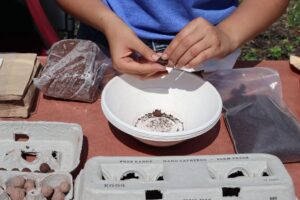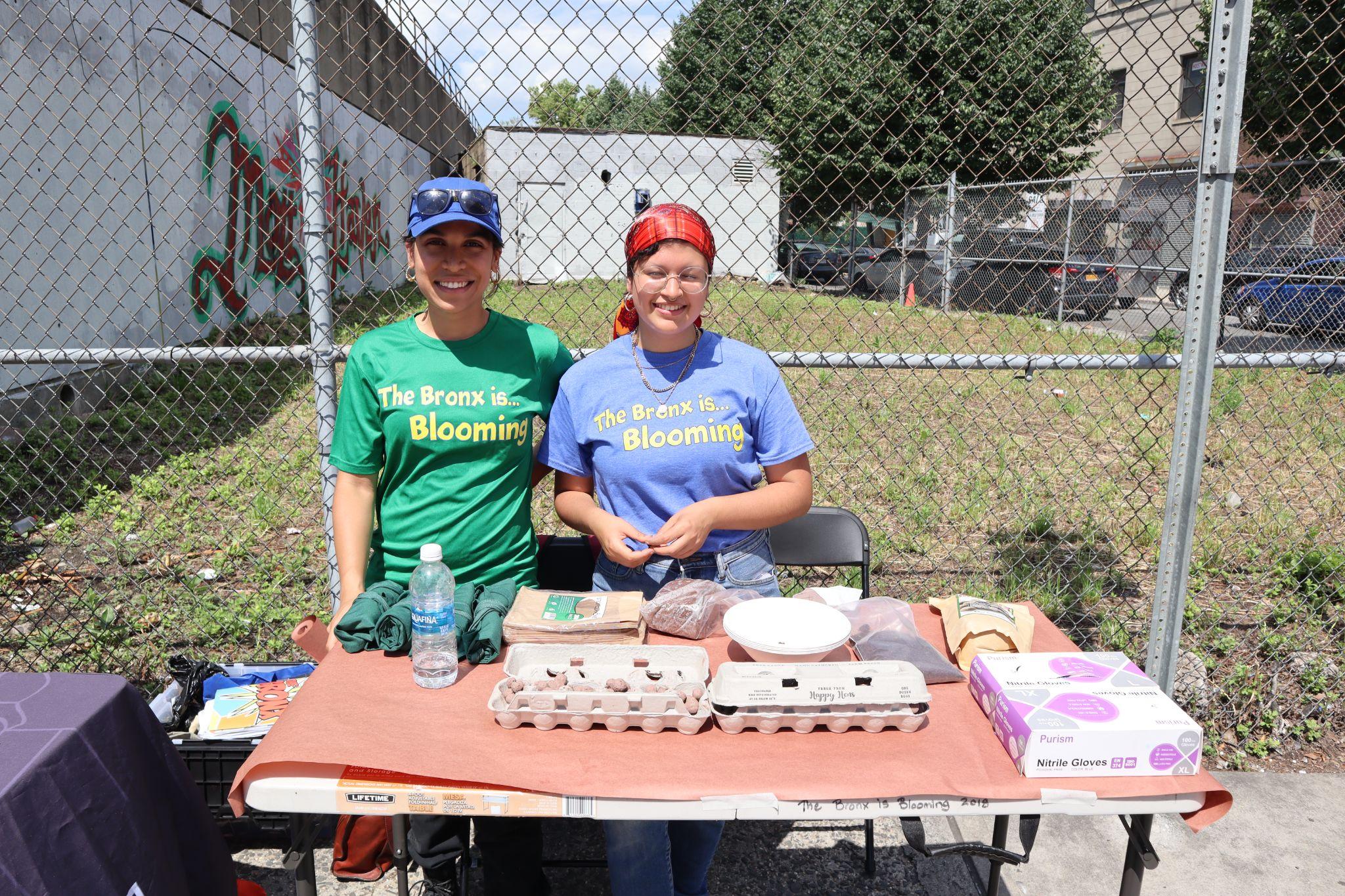In front of a vacant, city-owned lot at the corner of Park Avenue and 138th street, members of two local grassroots groups stood by to draw attention to the neglected parcel behind them.
South Bronx Unite and The Bronx is Blooming are joining forces to draw attention to the possibilities they say are within the public’s grasp in the area’s empty lots. Volunteers from both groups came out last Friday to introduce others to seed bombing and guerrilla gardening.
Mattia Colon, partnership development coordinator for The Bronx is Blooming, said every time she sees a derelict lot, she sees an opportunity.
“It’s a problem because we have a lot of empty lots, we have a lot of empty green spaces, and I’m questioning ‘what are we going to do with it?” said Colon.
“Are we going to let it sit here and let it keep being a place for people to litter? Or are we actually going to make it into a community space?”
Guerilla gardening calls for growing food or flowers in spaces where gardeners don’t have access, such as neglected public or private spaces. That goes hand in hand with seed bombing, which calls for packing seeds into clay or soil, rolling them up in small round orbs and tossing them around on the grounds of these hard to reach or inaccessible spaces.
Guerrilla gardening has been around for quite some time in New York City. Environmental non profit, The Green Guerrilla’s, formed in the early 1970’s by founders Liz Christy, Amos Taylor and Martin Gallent who fought for environmental justice. The group would throw what they called “seed green-aids” over to empty lots in hopes of beautifying their neglected neighborhoods.
The Port Morris and Mott Haven sections of the South Bronx are home to an estimated 60,000 residents. Between these neighborhoods lies St Marys Park, the largest park in the area, highlighting the limited large green spaces available for South Bronx residents who face alarmingly high rates of air pollution.
South Bronx Unite has collaborated with Columbia Mailman School of Public Health to place air quality monitors around Port Morris and Mott Haven, to use data to back up a fact of life residents have confronted for decades.
According to a study done by NYC Health, children between the ages of 5-17 in The South Bronx had the highest rate of asthma-related emergency visits.

With a push for green space equity within the borough, parks and green infrastructures could reduce particulate pollution – tiny particles of dust, chemicals and metals suspended in the air – and regulate air quality levels based on the EPA’s guide pertaining to benefits of green infrastructure.
“You want to make it the size of a peanut M&M is what we say.” explained Valeria Pinet, PLACE Summer Coordinator for The Bronx is Blooming. “You grab whatever seed you’re using for the seed bomb.”
“You fold it in so that the seeds mostly stay in the middle of the ball and then you form the shape of the seed bomb. They’re really quick to make, so you can make like 50 of these and you bring them with you. You see an empty lot and you want to hopefully beautify it a little, like through time. You just throw it over.”
“It’s not just about this vacant lot, it’s speaking to the larger issue of green space inequity, green space deprivation,” said Matthew Shore, Green Space Equity & Community Land Trust Organizer for South Bronx Unite.
“We have no access to the waterfront here in this community. You go to Brooklyn, Manhattan, Queens, they have that access, we don’t.”
With funding from the city, the empty lots and barren parcels could be converted into verdant, public areas where residents could gather.
“We’re paying taxes on these things, but they’re not in use so we’re here to try to revitalize them and make it nice public spaces for people,” said South Bronx Unite volunteer Luis Mendez.

